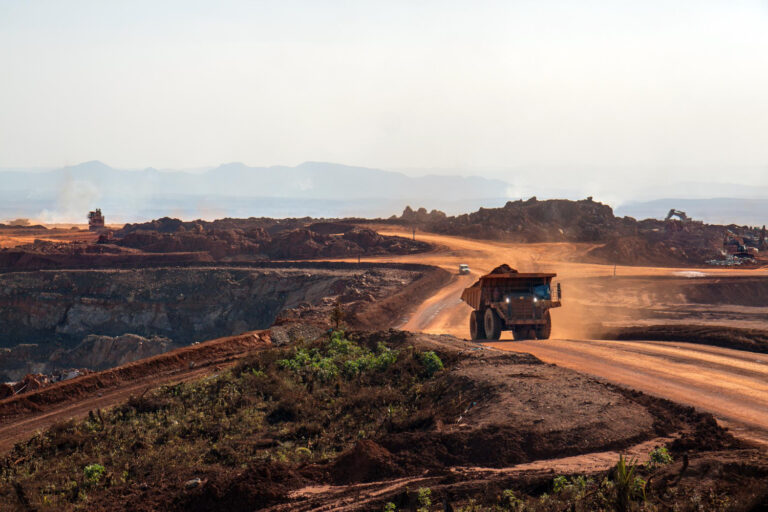Mining, particularly underground mining, is inherently risky. Miners work in dangerous conditions where rockfalls, ground shifts, and equipment malfunctions can lead to serious accidents or fatalities. As a result, safeguarding mining operations and workers is paramount. Two critical safety systems designed to mitigate risks are Tunnel Guards and Mine Guards. While both are essential for mining safety, they serve distinct roles and offer different features.
In this blog, we’ll explore the key differences between Tunnel Guards and Mine Guards, helping you understand which safety solution best fits your mining operation.
What is a Tunnel Guard?
A Tunnel Guard is a safety system designed specifically for protecting miners working within underground tunnels. Its primary function is to prevent tunnel collapses, rockfalls, and the dangers posed by unstable tunnel walls and ceilings. Tunnel Guards offer additional structural reinforcement, ensuring that tunnel sections remain secure throughout the mining process.
Key Features of Tunnel Guards
- Rockfall Prevention: Tunnel Guards are engineered to mitigate rockfalls and debris, which can be lethal in underground environments.
- Structural Support: These systems reinforce the tunnel’s structural integrity, preventing cave-ins and minimizing the risk of dangerous ground shifts.
- Flexibility: Tunnel Guards can be adapted to various tunnel sizes and conditions, making them versatile for different types of mining environments.
- Worker Safety: Tunnel Guards enhance the safety of workers by securing high-risk tunnel sections and limiting exposure to hazardous environments.
Best Uses for Tunnel Guards
- Underground Mining: In tunnels where there’s a high risk of rockfalls or ground instability.
- Transport Tunnels: When transporting equipment or personnel through unstable sections of a mine.
- Excavation Work: For active construction and tunnel reinforcement activities in mining projects.
What is a Mine Guard?
A Mine Guard, on the other hand, is a broader safety solution designed to protect workers and the mine as a whole, not just the tunnels. Mine Guards offer comprehensive coverage of different hazards within the entire mining site, including surface and underground areas. This safety system is equipped with advanced monitoring tools to track environmental conditions, detect potential hazards, and alert miners of imminent dangers.
Key Features of Mine Guards
- Multi-Hazard Protection: Mine Guards can protect against a variety of dangers, including gas leaks, equipment failures, and fire hazards.
- Surveillance and Monitoring: These systems include advanced sensors that continuously monitor air quality, temperature, and gas levels, ensuring a safe work environment.
- Emergency Response: Many Mine Guards include emergency alarms and evacuation procedures that activate when dangerous conditions are detected, helping miners respond quickly to threats.
- Comprehensive Coverage: Mine Guards are not limited to tunnel safety; they monitor all aspects of mining operations, both on the surface and underground.
Best Uses for Mine Guards
- Large-Scale Mining Operations: When mining involves both surface and underground risks.
- Gas-Prone Mines: In areas with a higher risk of hazardous gas accumulation, such as methane or carbon monoxide.
- High-Risk Zones: For mines that involve equipment with explosive materials or fire hazards.
Key Differences Between Tunnel Guards and Mine Guards
| Feature | Tunnel Guard | Mine Guard |
| Primary Function | Protects against rockfalls and tunnel collapses. | Provides broad safety coverage for various hazards. |
| Scope of Protection | Focused on underground tunnels. | Covers both surface and underground mining areas. |
| Hazard Coverage | Mainly geological hazards like rockfalls and ground instability. | Includes fire, gas leaks, equipment malfunctions, and more. |
| Technology Integration | May include basic support structures with minimal tech. | Often incorporates advanced sensors and surveillance systems. |
| Best Application | Specific to tunnel safety in underground operations. | Ideal for large-scale mining with varied risks. |
When to Use a Tunnel Guard vs. Mine Guard
Use Tunnel Guards If:
- You operate primarily in underground environments with unstable tunnel conditions.
- Your main concern is protecting workers from the dangers of tunnel collapses or rockfalls.
- You need a system designed specifically to secure tunnel sections and enhance structural stability.
Use Mine Guards If:
- You need a comprehensive safety solution that covers both surface and underground mining risks.
- Your mine is susceptible to a wide range of hazards, such as gas leaks, fire, or equipment failure.
- You want advanced monitoring and alert systems to continuously track and address environmental hazards.
The Benefits of Integrating Both Systems
In large mining operations, the best approach to safety often involves combining both Tunnel Guards and Mine Guards. While Tunnel Guards provide specific protection against geological hazards like rockfalls, Mine Guards offer broader protection against various other risks, including gas exposure, fires, and equipment malfunctions. By using both systems in tandem, mines can significantly reduce the risk of accidents and fatalities.
Together, Tunnel Guards and Mine Guards create a comprehensive safety strategy that addresses the diverse challenges of mining environments, ensuring workers are protected from all angles.
Conclusion: Choosing the Right Safety System for Your Mine
Mining is a dangerous industry, but investing in the right safety systems can prevent most accidents and ensure the well-being of workers. Both Tunnel Guards and Mine Guards play crucial roles in minimizing risks, though their applications and features vary. Tunnel Guards are tailored for tunnel safety, while Mine Guards offer broader protection across all areas of a mine.
By understanding the unique features and benefits of each, you can make an informed decision about which safety systems best suit your mining operation, ensuring a safer, more secure environment for everyone involved.

